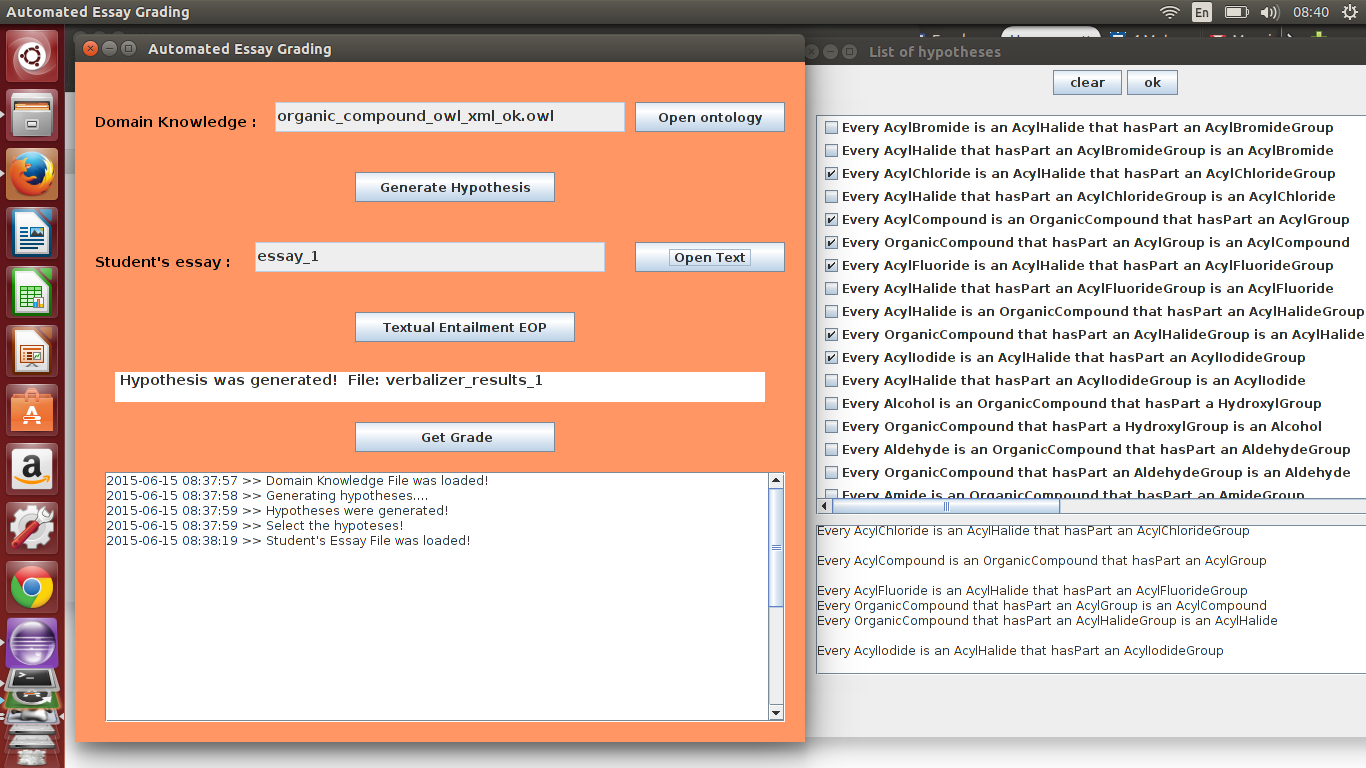About the tool. ONTOEG system for automated essay grading uses ontologies and textual entailment.
The process of textual entailment is guided by hypotheses, which are extracted from a domain ontology.
Textual entailment checks if the truth of the hypothesis follows from a given text.
We enact textual entailment to compare students answer to a model answer obtained from ontology.
We validated the solution against various essays written by students in the chemistry domain.
Paper: A. Groza, R. Szabo - Enacting textual entailment and ontologies for automated essay grading in chemical domain, 16th Int. Symposium on Computational Intelligence and Informatics (CINTI2015), Budapest, Hungary, 19-21 November, 2015 (pdf) (slides)
This section describes the pre-requisites of running the application. The application has been developed using Java SE Development Kit 7 on Linux Ubuntu 14.04 or higher operating system, using Eclipse IDE.
It is a desktop application, which relies on internet connection for converting from different ontology format and also for using the ontology verbalizer which can provider the text information from the information specified in ontologies.
-
Java Runtime Environment version 1.7 or higher installed.
-
Apache Maven version 3.3.3 or higher. to run the Excitement Open Platform libraries, you need to install Apache Maven version 3.3.3 or higher.
-
File Resources: The file structure or folder environment contains the file resources needed to run the application. If the user want to change the domain ontology file from chemical domain to another domain, you simply have to update the existing ontology file or add the new ontology with owl extension. To change the domain knowledge you have to update the datasets used by the textual entailment procedure. Finally, you can select from the application’s interface the student’s essay that will be evaluated.
- Download v.1.0
This section describes the main functionality of AEG system.
Firstly, the user have to upload the domain knowledge, the ontology used for student’s essay processing, and then generate the list of hypotheses pressing “Generate Hypotheses”.
In the right side, the list of hypotheses will appear in a new windows. The user can select the relevant hypothesis. The selected hypotheses are listed in the bottom of the window.When the hypotheses are selected, the user have to upload the student essay’s.
The second step is the processing of the essay using the textual entailment technique.
Finally, when the textual entailment process ends, the user can obtain the final grade. Each step of the essay processing can be follow by the user in the bottom field of the main windows.

Figure 1. Selecting hypothesis generated from the chemical ontology.
Textual entailment will be applied on the set of hypothesis and student essay.
Adrian.Groza [at] cs.utcluj.ro